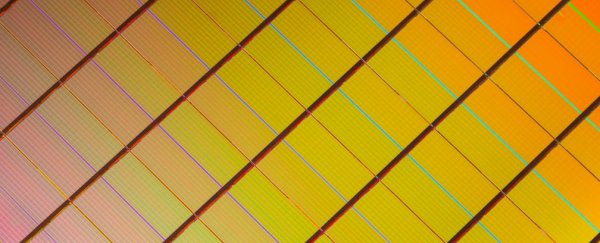Tech giants Intel and Micron have announced a new class of computer memory called 3D XPoint, which the companies say is up to 1,000 times faster than the conventional NAND flash memory we use in devices today.
The new form of non-volatile memory is the first new category of memory technology since NAND flash was invented nearly three decades ago, marking a major turning point in how we could be storing and accessing data in the near-term future. In addition to the phenomenal speed gains, 3D XPoint is said to provide 1,000 times greater endurance when saving new data to the memory. It's also 10 times denser than current flash, meaning it could lead to smaller components and ultimately even smaller devices.
While NAND might not exactly be a household name, it's the kind of digital storage employed in virtually all small consumer electronics currently on the market: memory cards, USB keys, and the solid-state drives found in everything from smartphones to ultraportable laptops (not counting older computers or desktop PCs that still use mechanical platter hard drives).
3D XPoint's speeds are enabled by its ultra-dense transistor-less architecture, which its makers describe as a "three-dimensional checkerboard where memory cells sit at the intersection of words lines and bit lines". Don't worry, that doesn't make much sense to us either, but effectively, the memory is made from a tightly constructed 3D lattice, which cuts down on the lengths information has to travel, leading to substantially reduced read/write processes for data.
"For decades, the industry has searched for ways to reduce the lag time between the processor and data to allow much faster analysis," said Rob Crooke, Intel's SVP of non-volatile memory solutions, in a statement. "This new class of non-volatile memory achieves this goal and brings game-changing performance to memory and storage solutions."
Those performance gains will initially be felt in the corporate and government sector, where Intel and Micron say the new technology will improve the efficiency of big data systems. Examples the companies provide include faster methods for identifying fraud patterns in financial transactions, and enabling genetic researchers to draw upon vast data sets in real time without any lag.
But 3D XPoint should also have applications for consumers, with faster and tougher data mechanisms theoretically delivering benefits for everything from 3D gaming through to better and potentially cheaper solid state drives and personal storage devices. Intel and Micron haven't announced when products with 3D XPoint will be available, but the technology is going into production this year, so hopefully we won't have too long to wait before sampling these speeds for ourselves.
